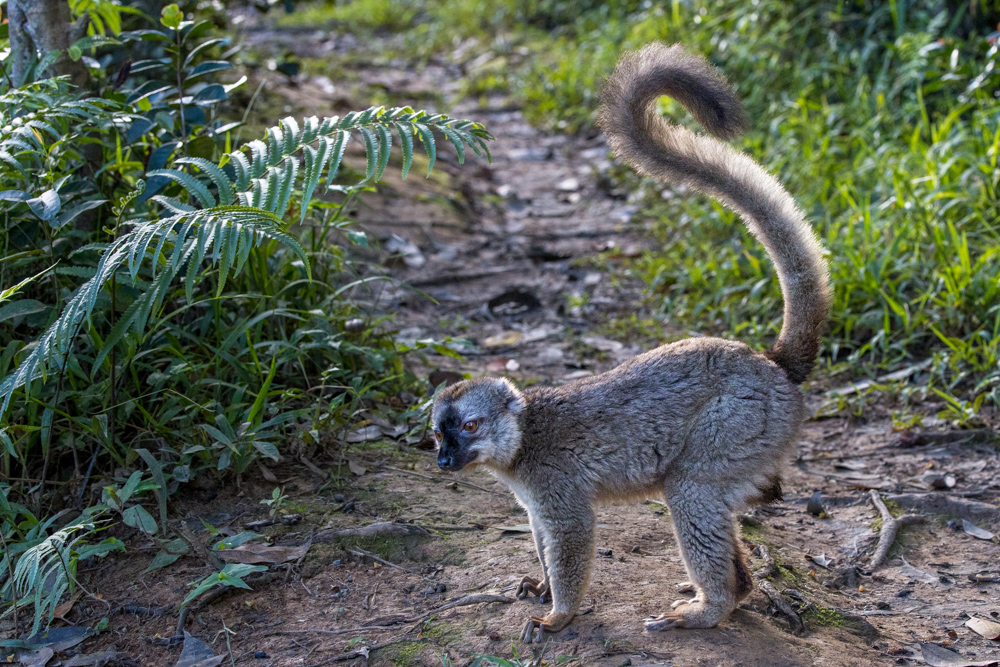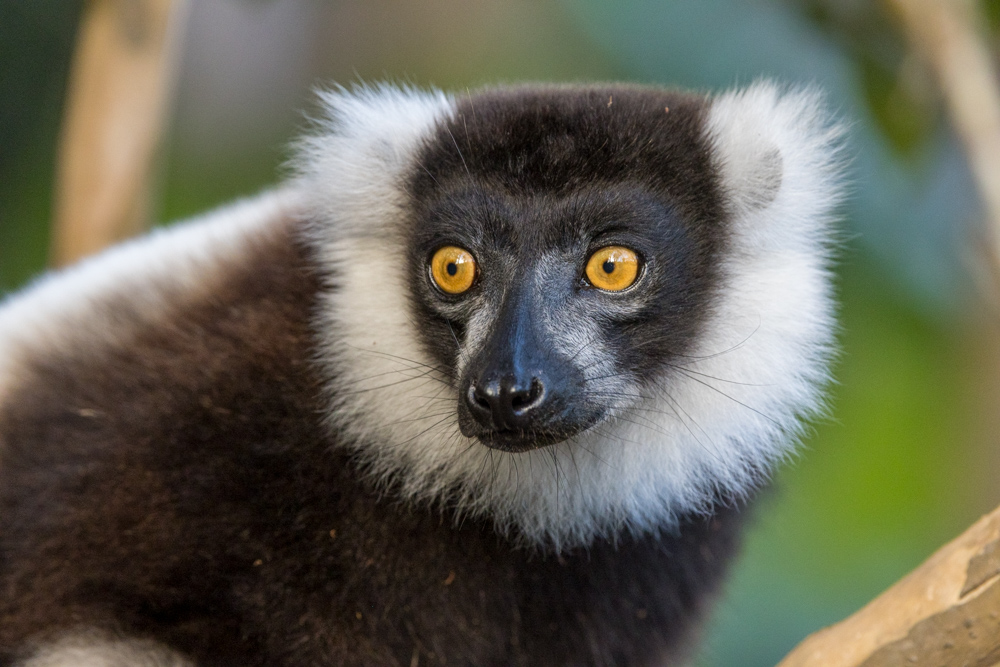Tuesday, May 24, 2022 -
Today we visit Andasibe park - it was a return visit for me - but no rain this time. This made for a much
better visit.
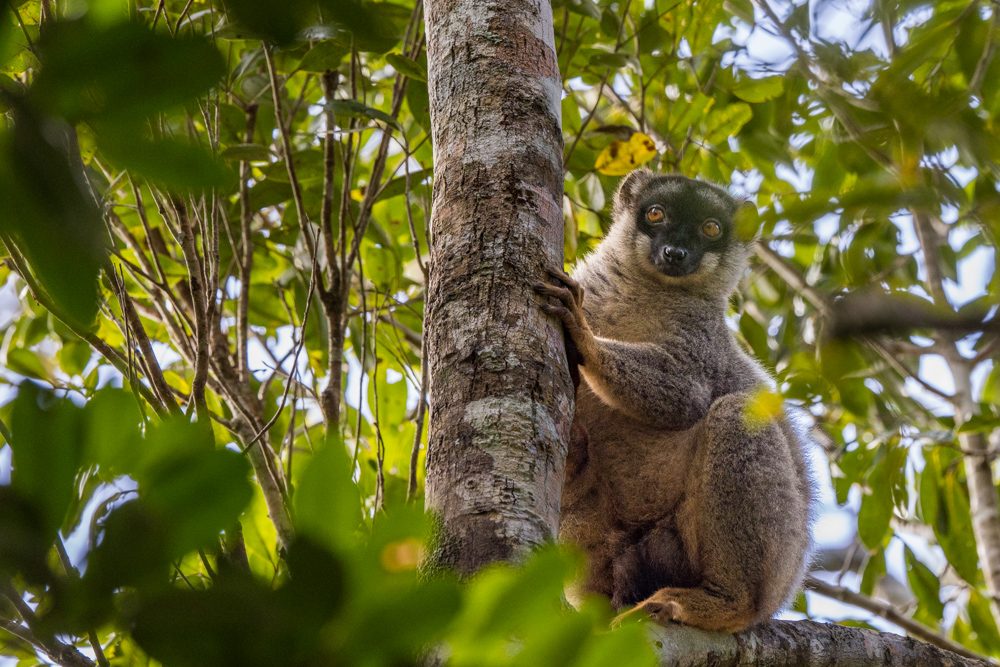
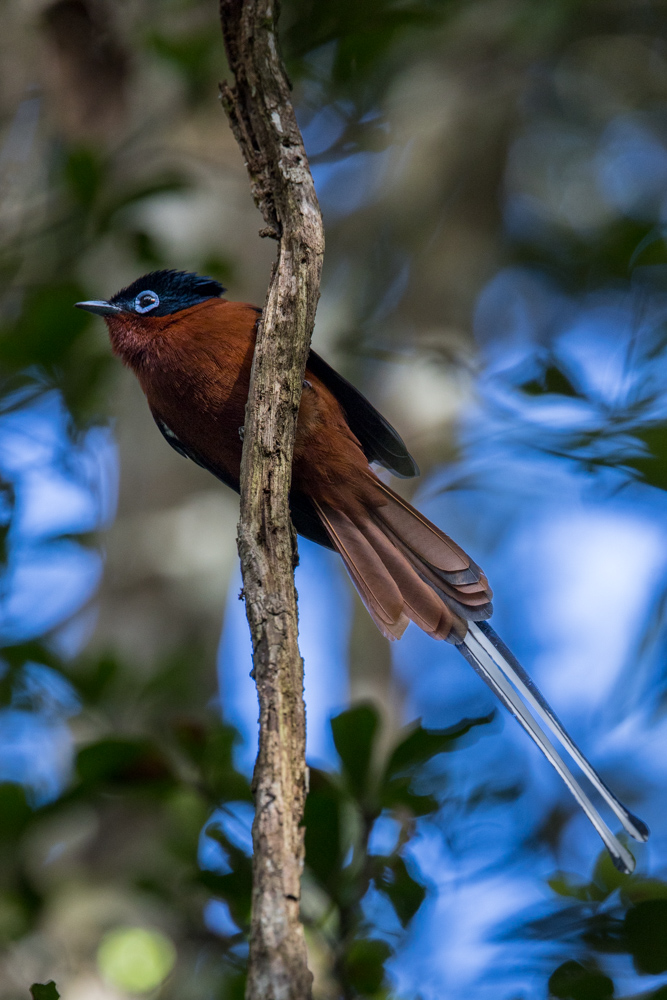

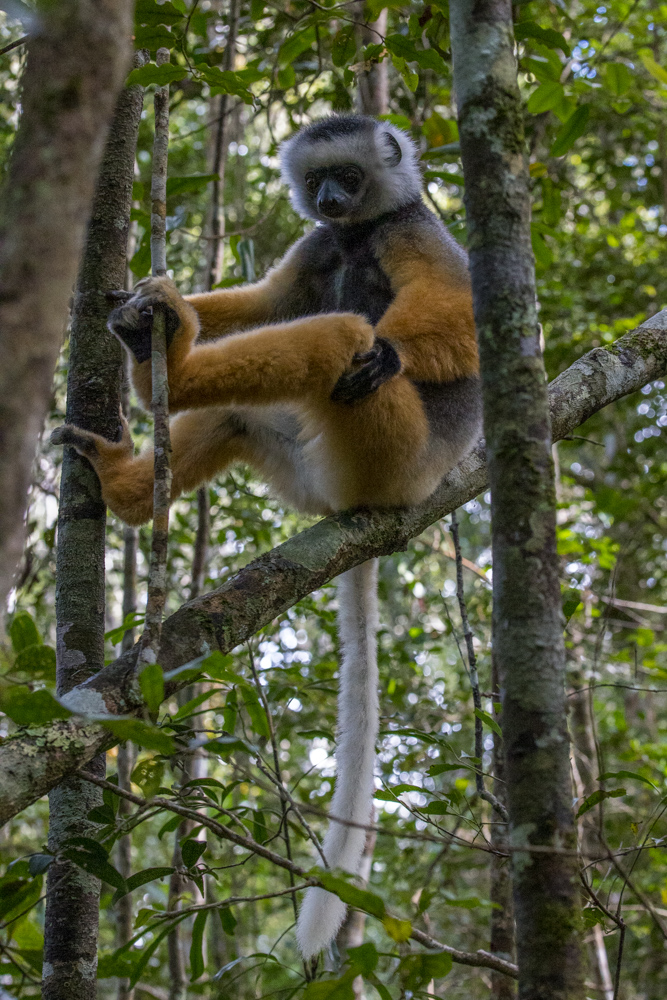
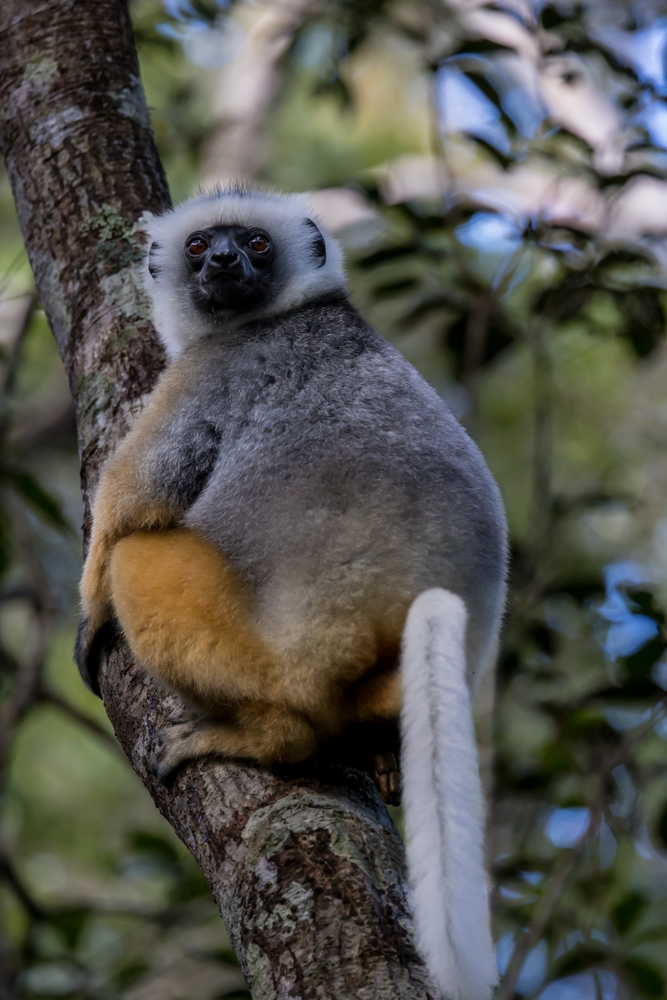
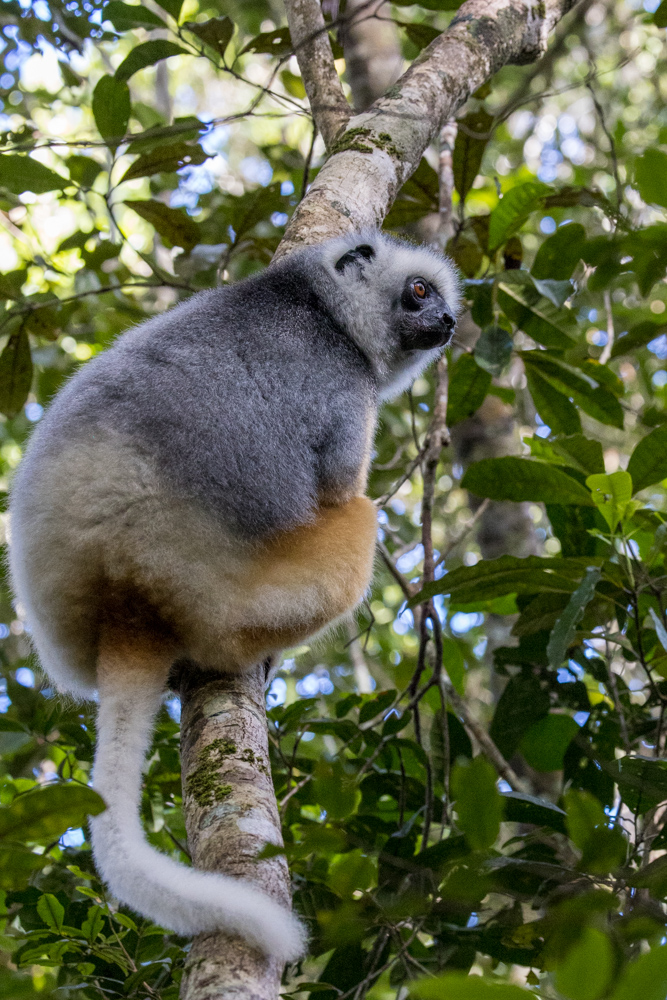
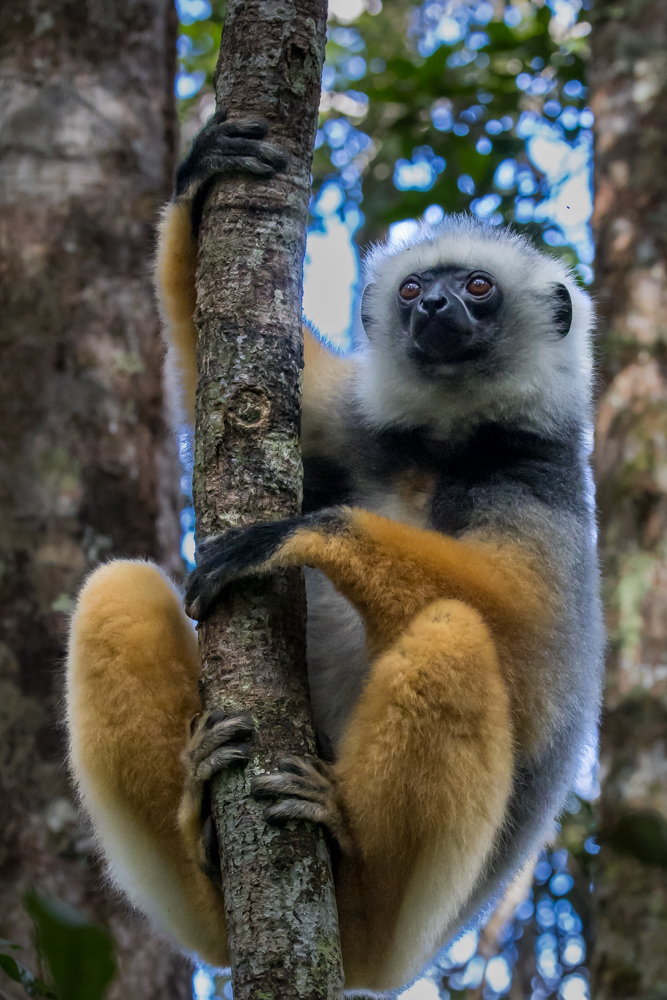
As we hiked in the forest we could hear the Indri calls all around us.

The Indri lemur is the largest lemur - up to 28 inches high and a body weight of up to 28 pounds. Unfortunately, it too is categorized as "Critically Endangered". Only one Indri has lived over a year in captivity and none have bred successfully while captive.
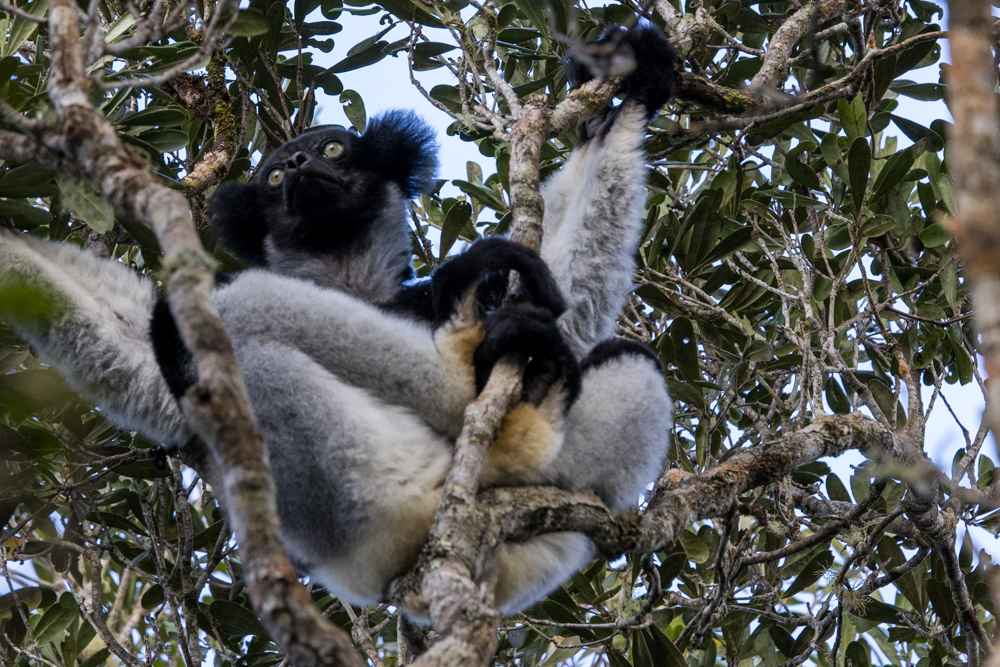
It is a diurnal tree-dweller related to the sifakas and, like all lemurs, it is native to Madagascar. It is revered by the Malagasy people and plays an important part in their myths and legends with various stories in existence accounting for its origin.
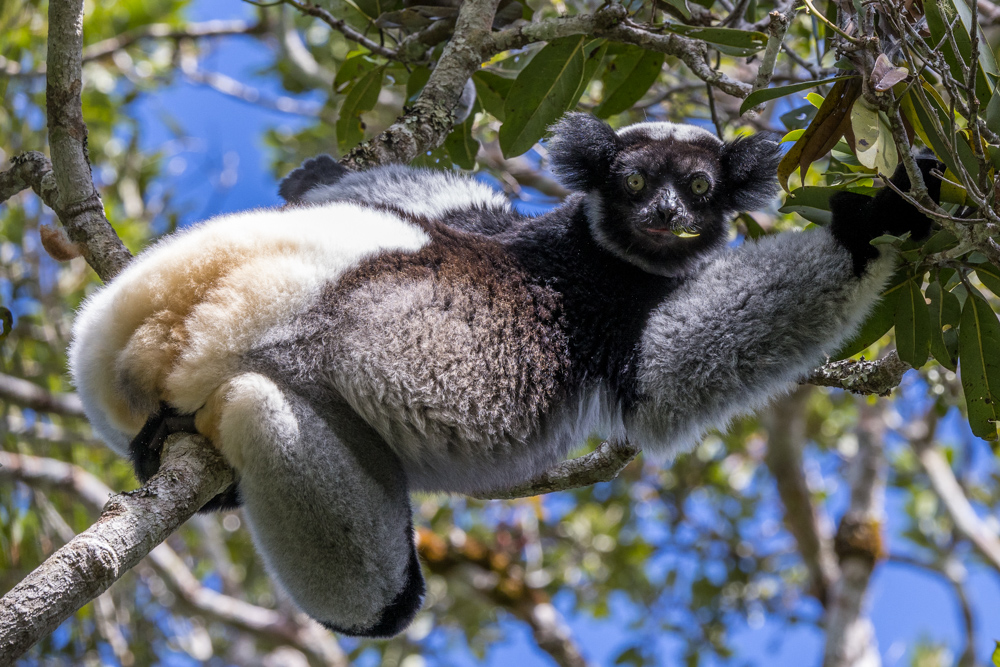
The Indri is herbivorous and primarily leaf eating. It prefers young, tender leaves, but will also eat seeds, fruits, and flowers. Female Indri seems to have a greater preference for immature leaves than males do and spends more time foraging among them
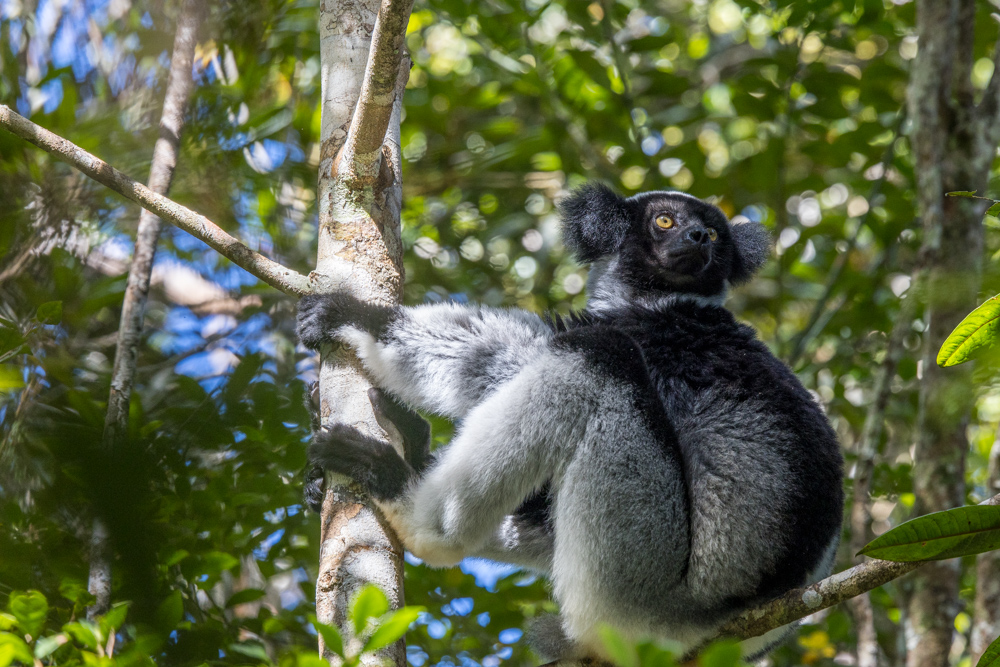
Most legends establish a close relationship between the Indri and humans, and many invoke common ancestry. In some regions, two brothers were believed to have lived together in the forest until one of them decided to leave and cultivate the land. That brother became the first human, and the brother who stayed in the forest became the first Indri.
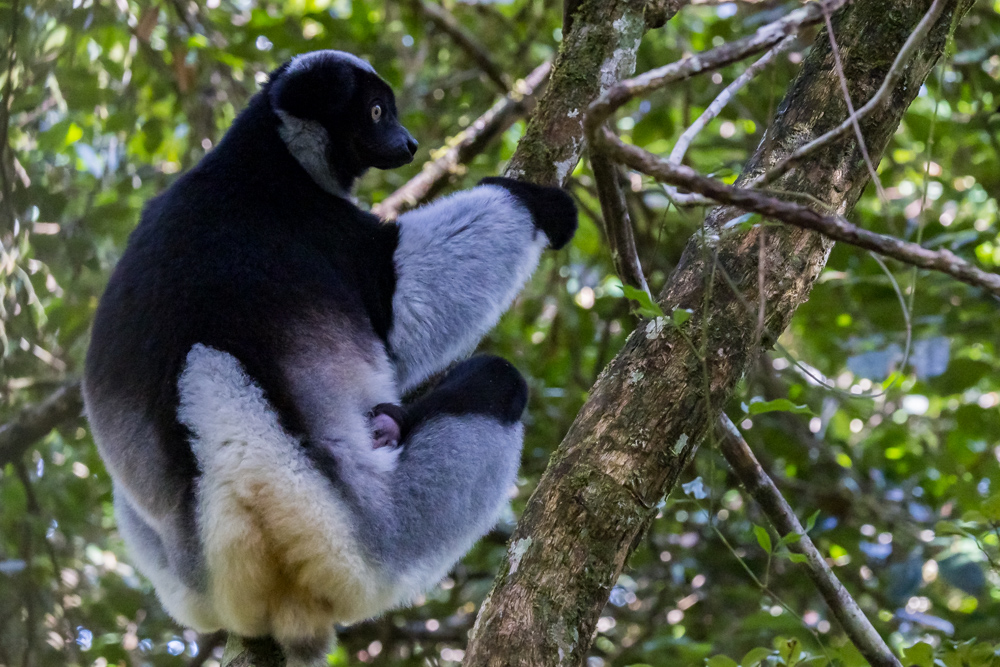
The Indri practices long-term monogamy, seeking a new partner only after the death of a mate. It lives in small groups consisting of the mated male and female and their maturing offspring. In the more fragmented forests of their range, the Indri may live in larger groups with several generations.

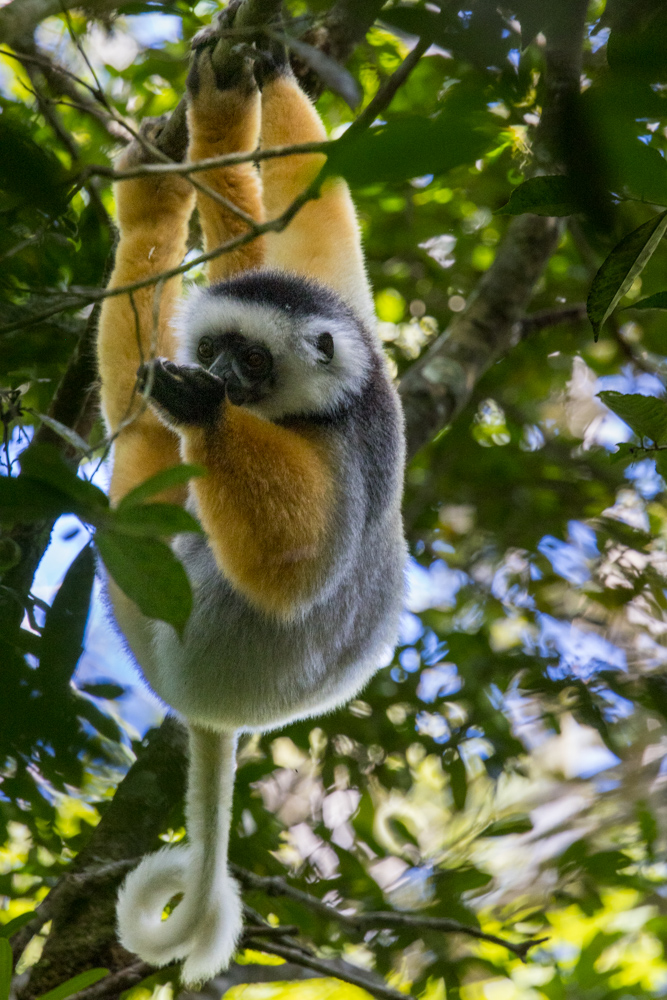
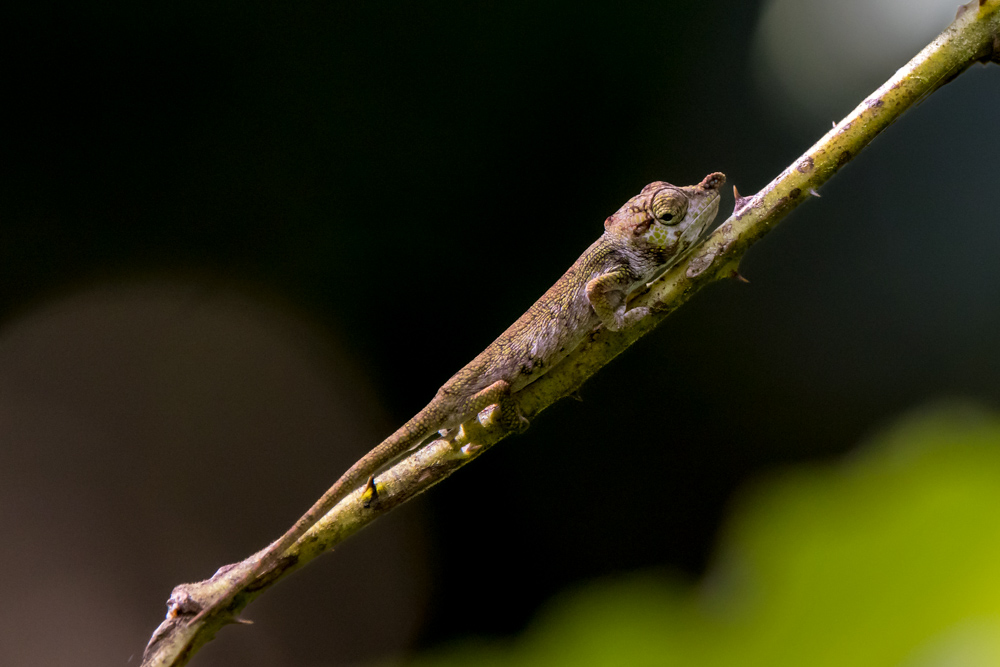



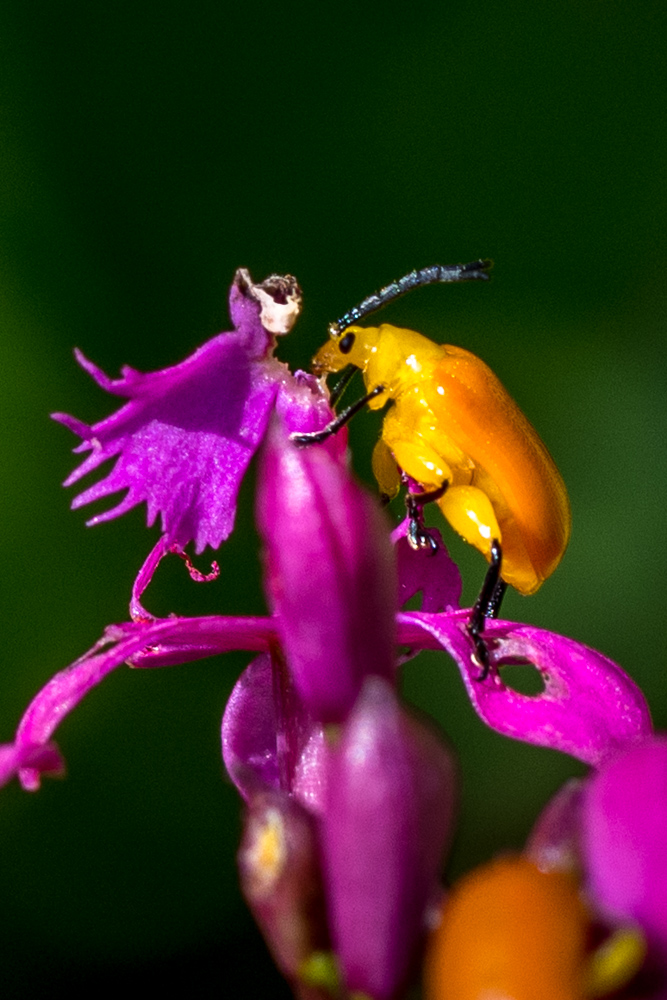
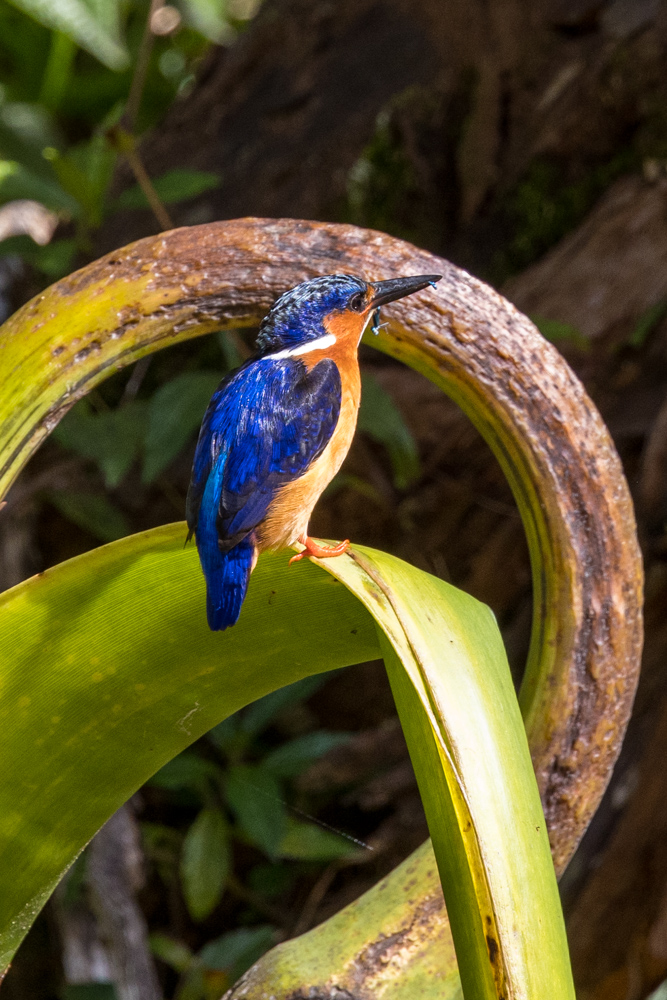
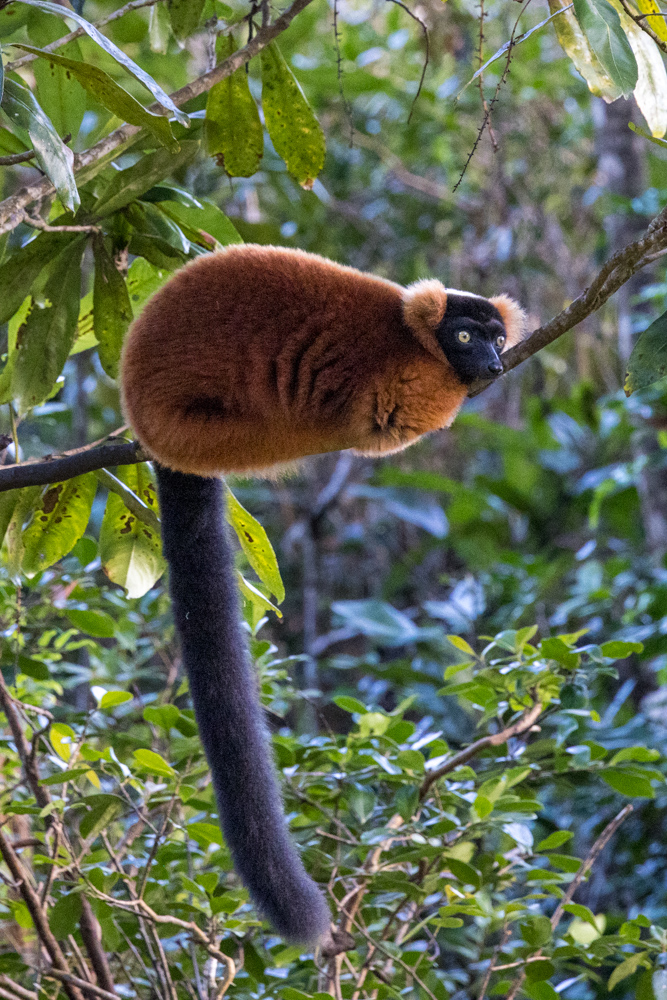
The Red Ruffed lemur is a very clean animal and spends a lot of time grooming itself and in social grooming. The front teeth and the claw on the second toe of the hind foot are specially adapted for this behavior.

The Diademed sifaka is classified as "Critically Endangered". As of the year 2002, population estimates for the species range between 6,000 and 10,000 individuals.
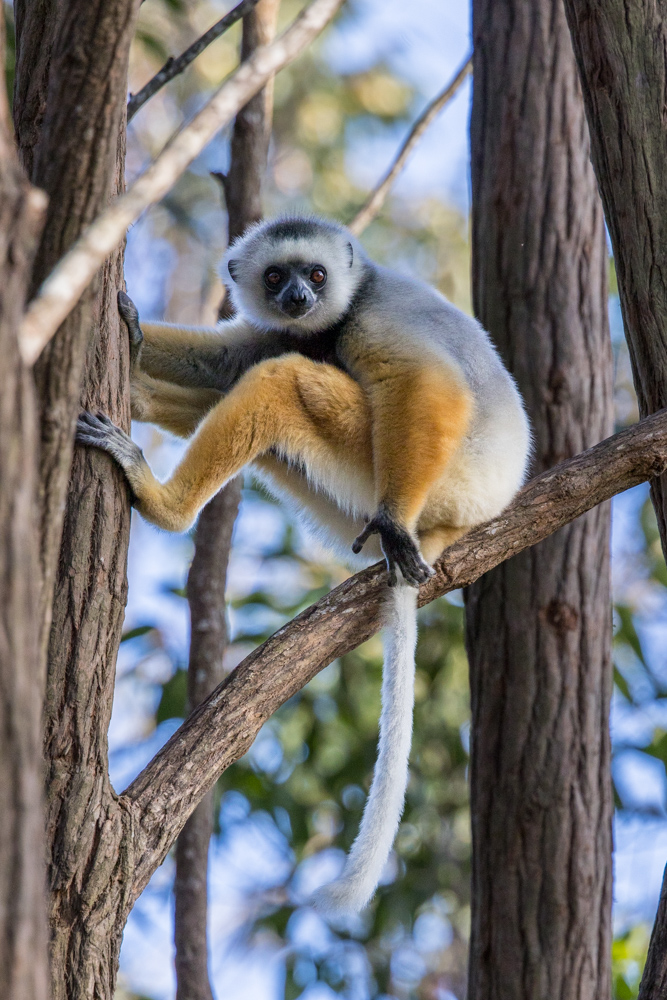
This species likes the trees, and only rarely are seen on the ground.
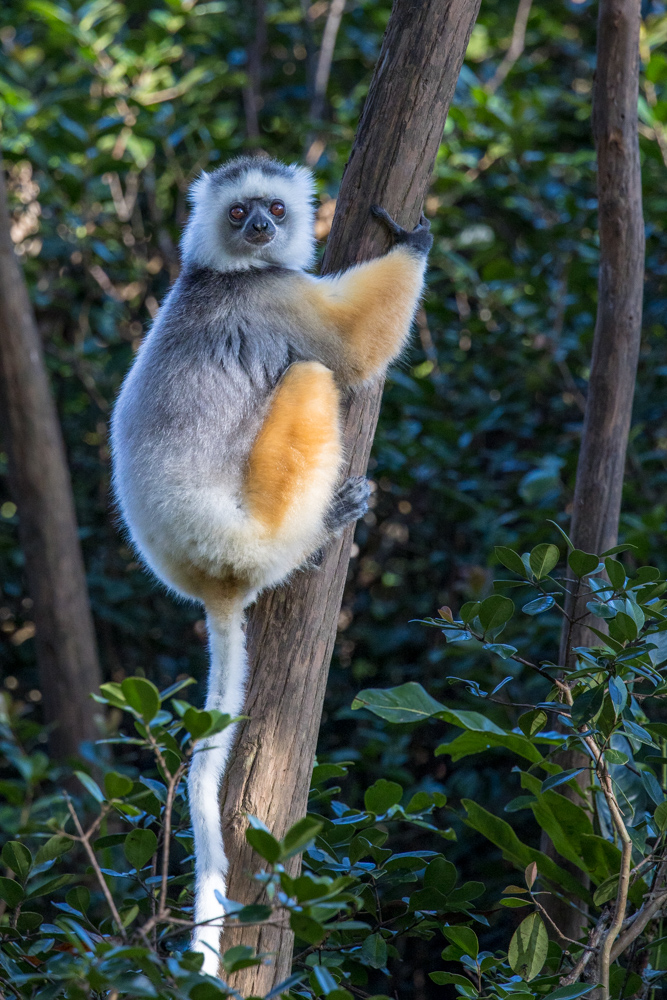
It is a vertical clinger then when it decides to move goes latterly to the next tree.
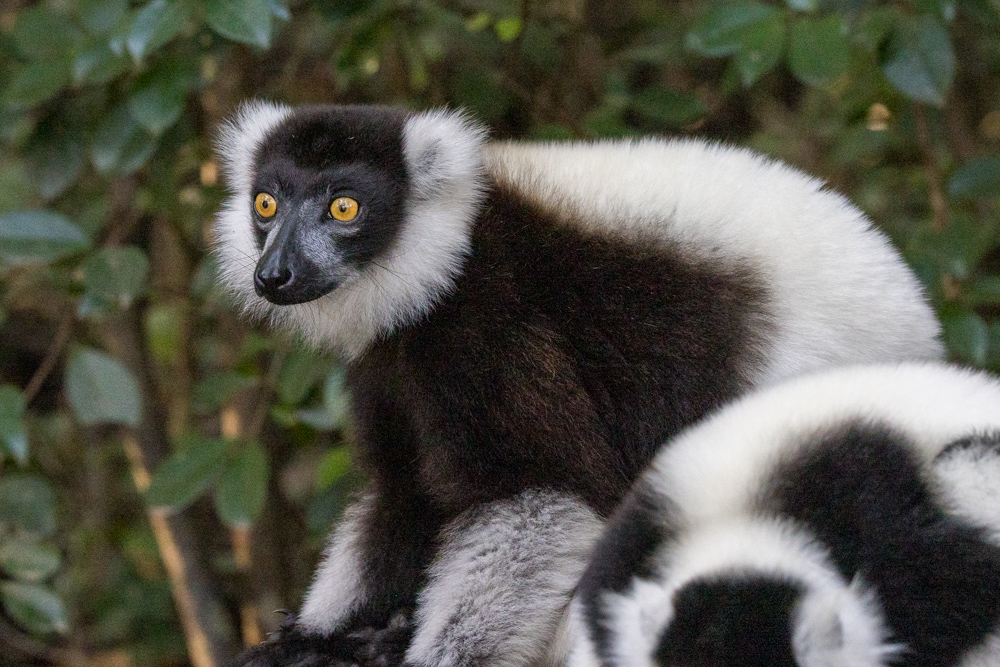
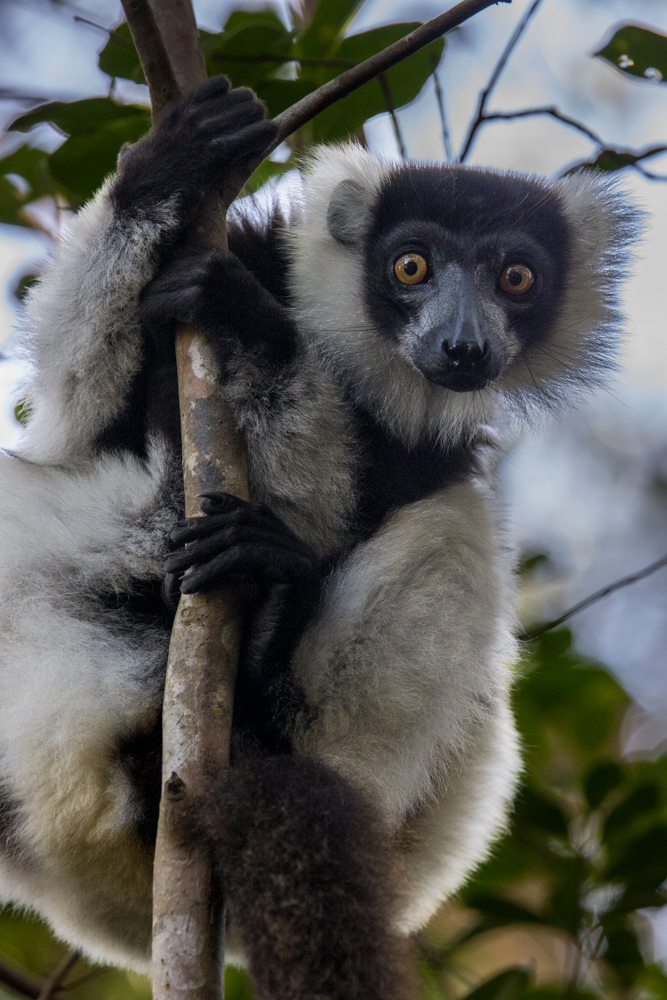
Black and White Ruffed lemurs are also known as the world's largest pollinators, due to their relationship with the traveler's palm. They have the unique ability, among pollinators, to open the tree's flowers. While the lemurs benefit by eating the nectar within the flowers, the tree benefits from the pollination that occurs when the pollen sticks to the lemurs' faces and gets transported to the next tree.
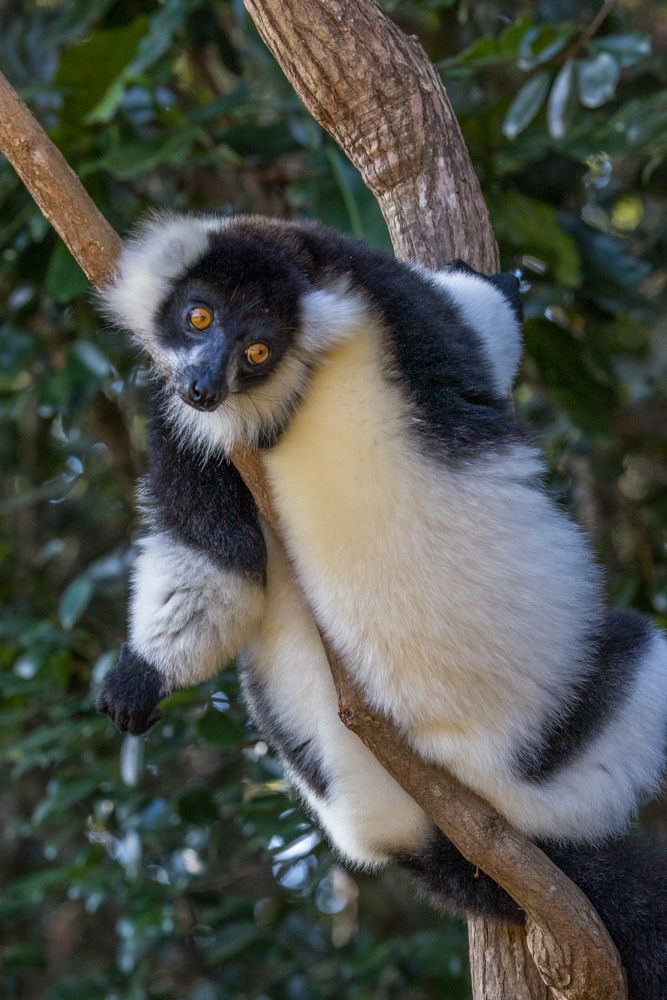
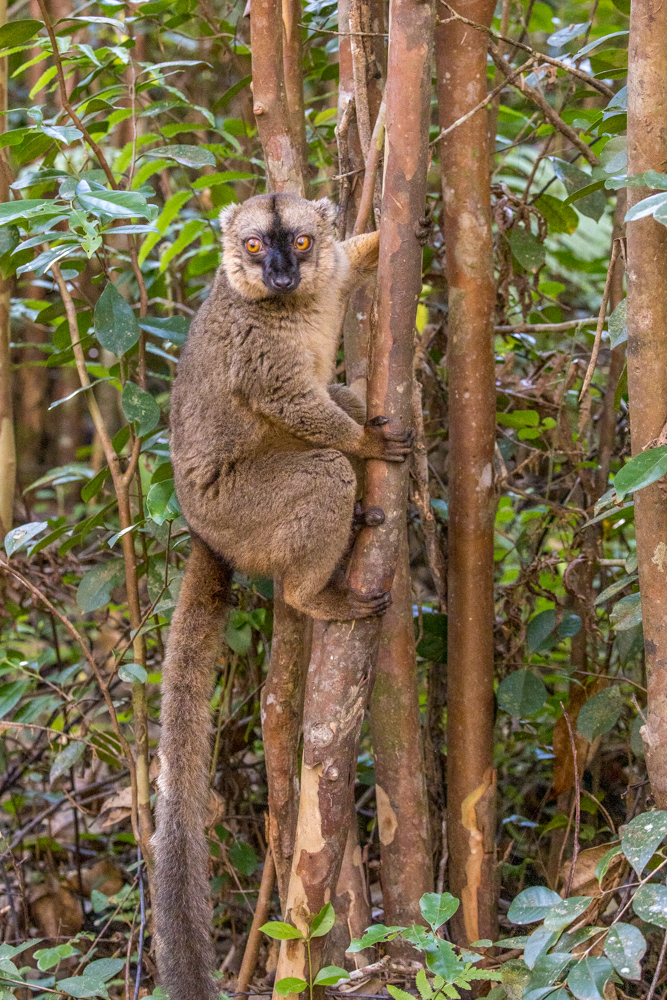
Consistent with its large range, the common brown lemur occupies a variety of forest types, including lowland rainforests, montane rainforests, moist evergreen forests, and dry deciduous forests. They spend about 95% of their time in upper layers of the forest and less than 2% of their time on the ground.
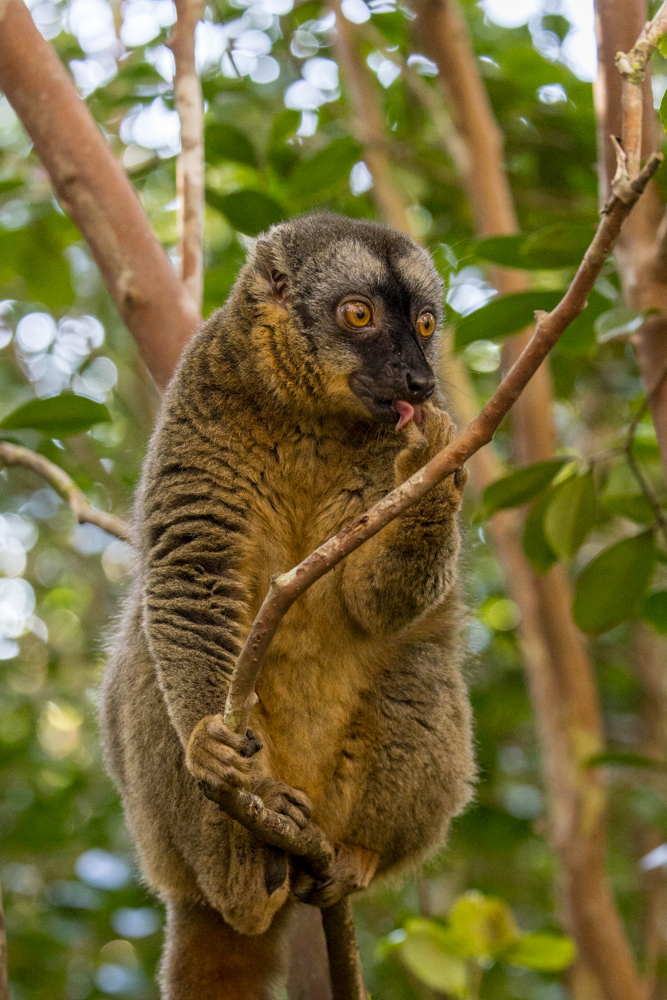
The Common Brown lemur's diet consists primarily of fruits, young leaves, and flowers. It also eats bark, sap, soil, and red clay. It can tolerate greater levels of toxic compounds from plants than other lemurs can.
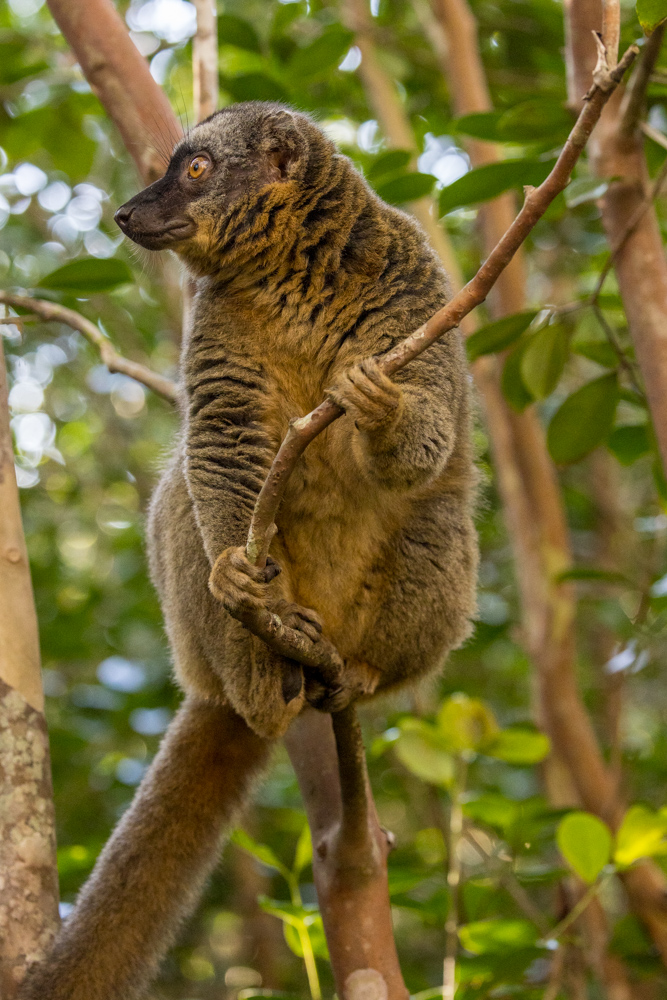
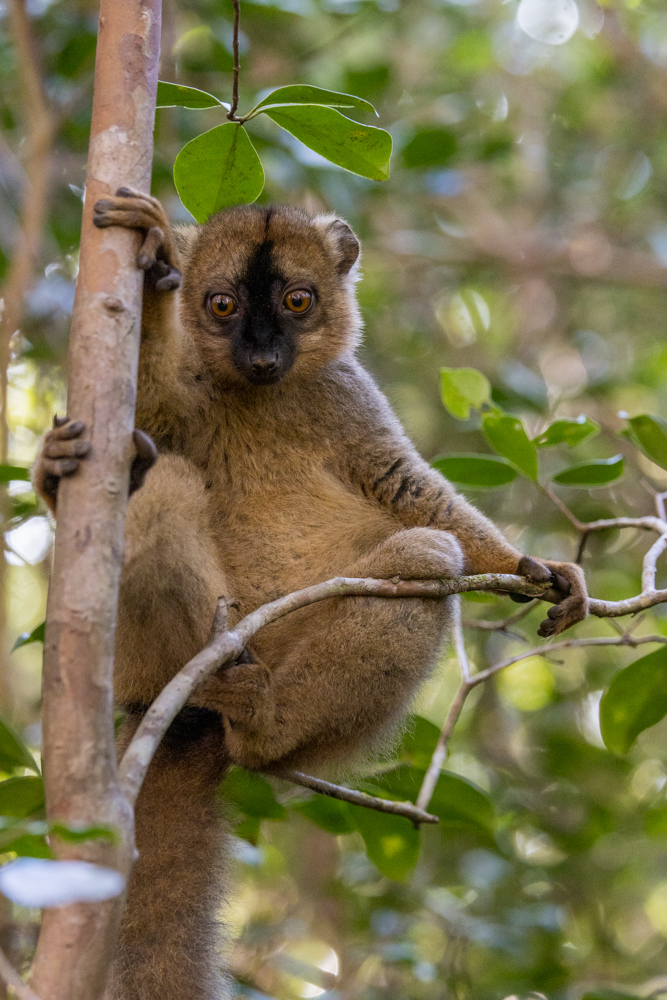
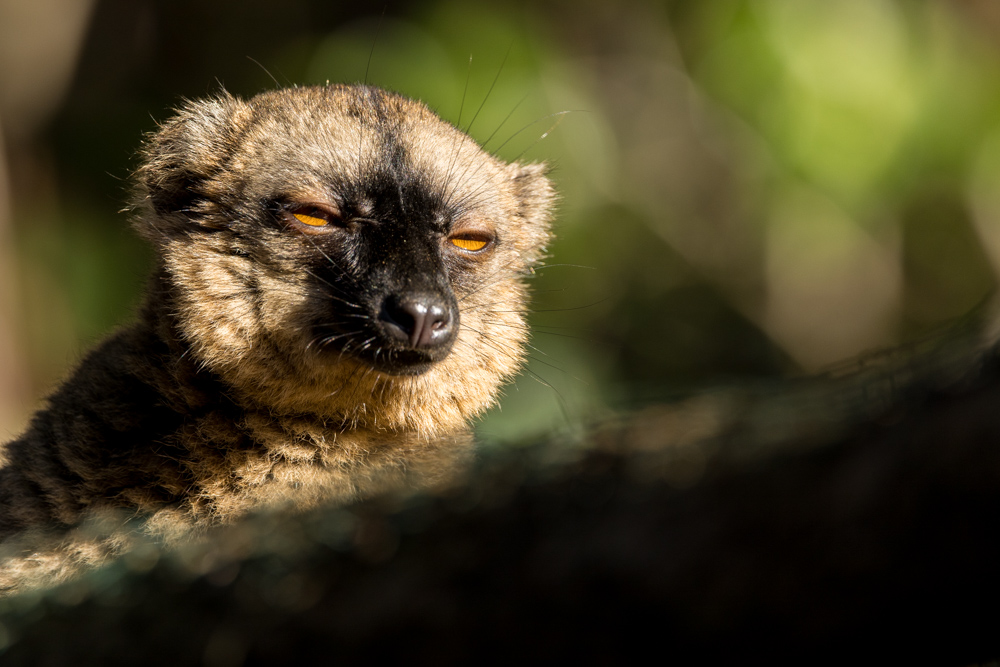
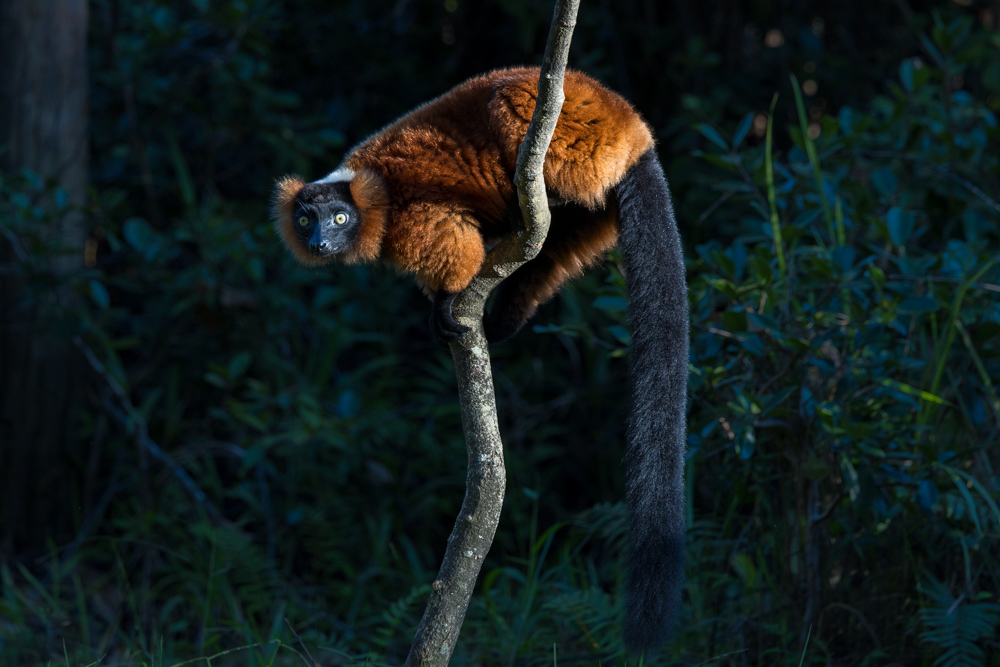
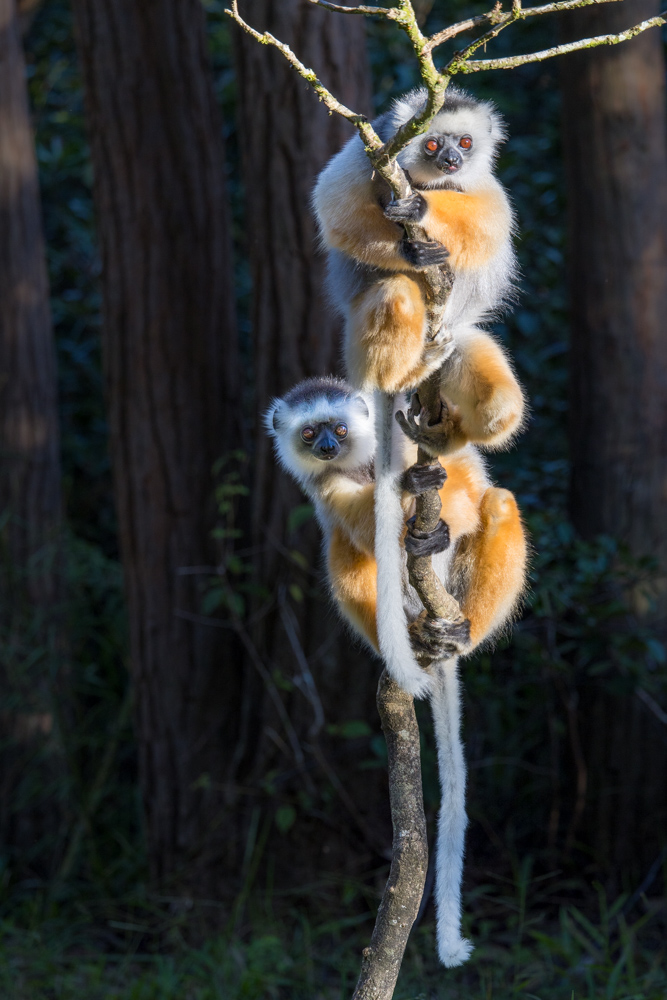
The Diademed sifaka forms groups typically of two to ten individuals, which may include multiple male and female adults. Each troop defends an exclusive home territory 62 to 125 acres using perimeter scent territorial marking by both the males and females.
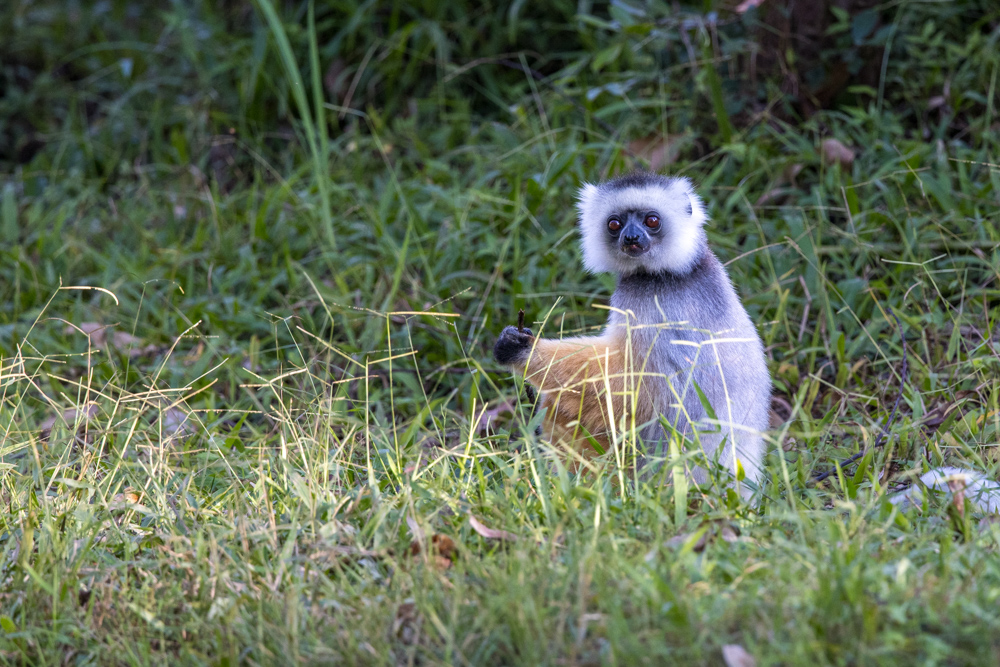
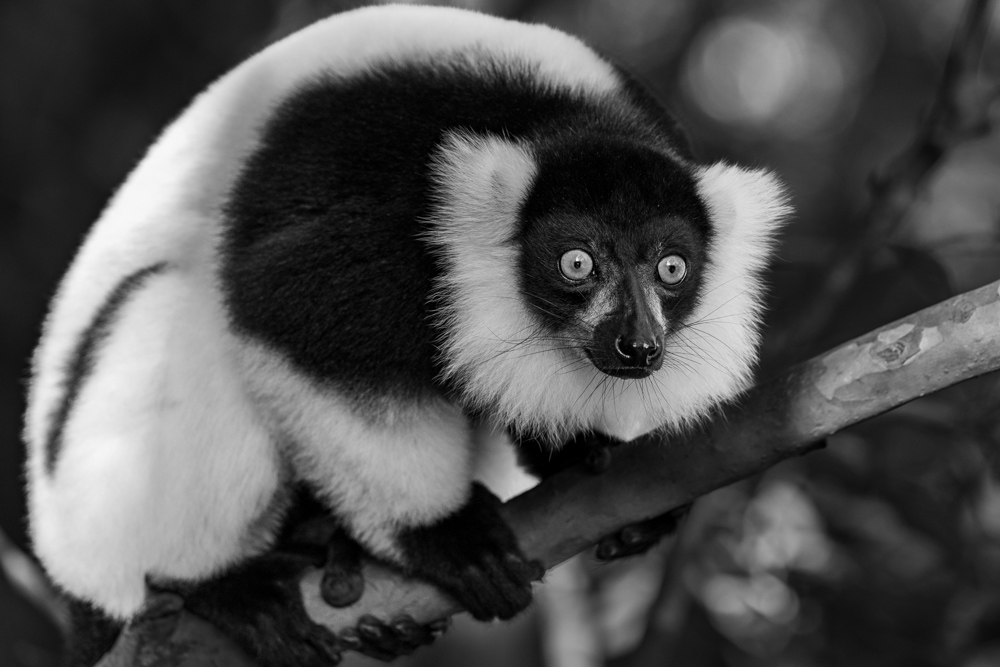


Their distinctive golden eyes have some stereoscopic vision but individuals vary with respect to their ability to see color; some can see colors as we do, and some individuals cannot. This genetic variation is well-known among many non-human primates.
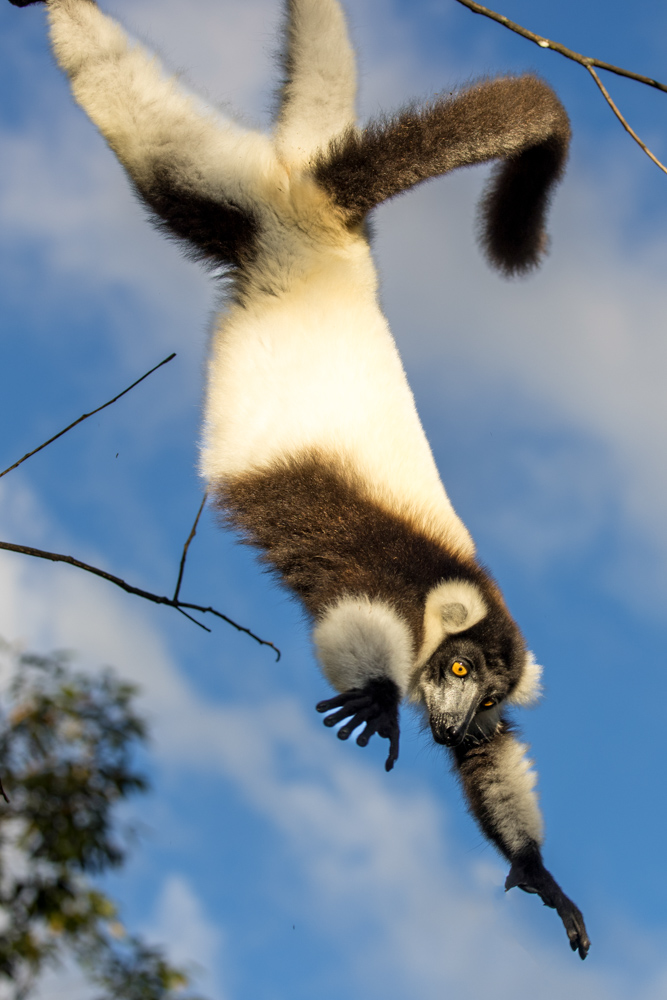
As a primarily tree-based species, they leap from branch to branch. Because ruffed lemurs are especially fond of fruit, they are also adept at suspending from their feet to help reach ripe fruit hanging from the tree branches.
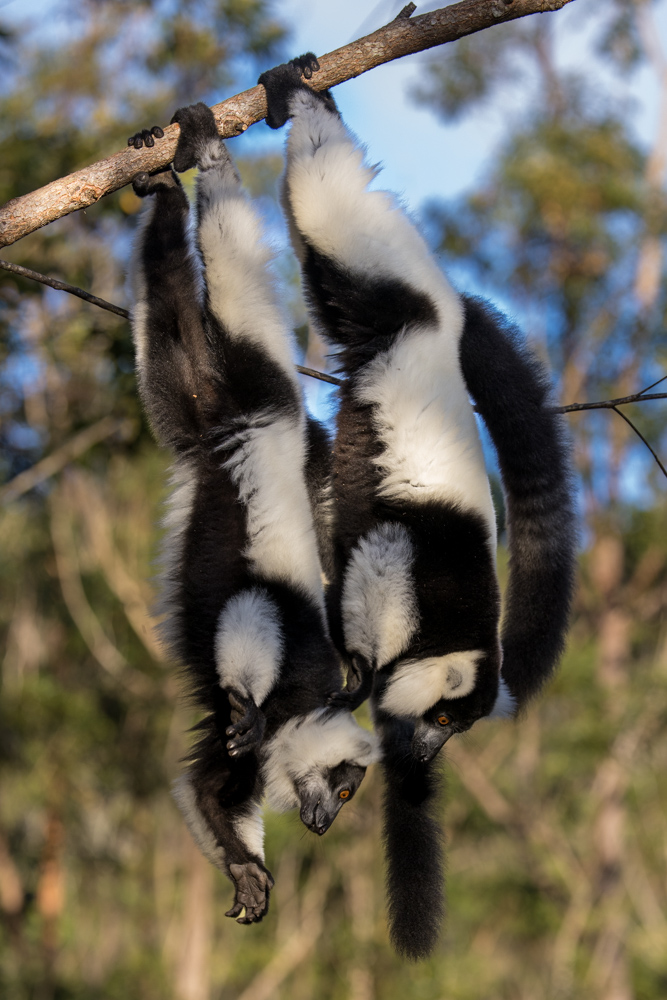
They live an average of 19 years.
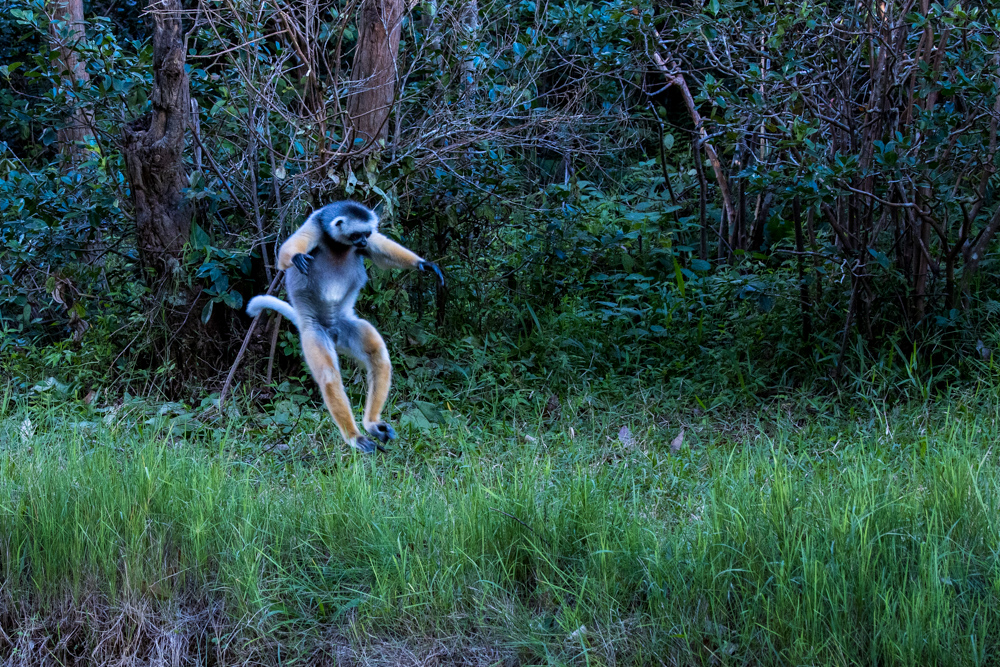
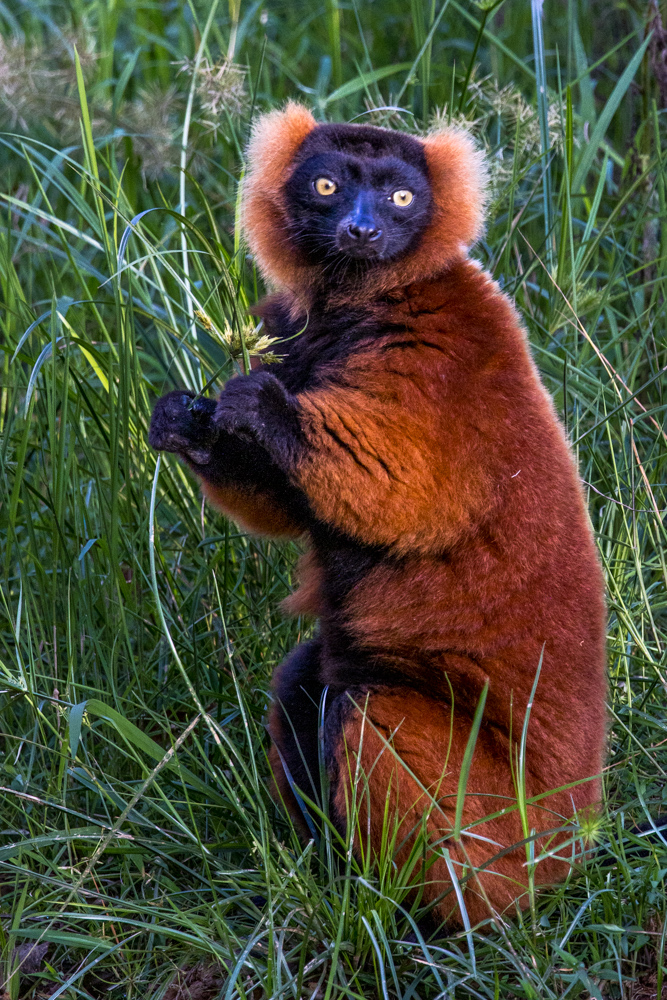
While "Critically Endangered" zoos around the world are breeding them. The captive population of Red Ruffed lemurs is 590 animals in 2012.

